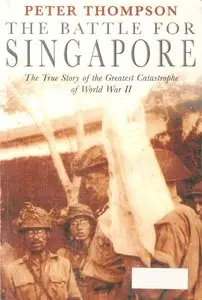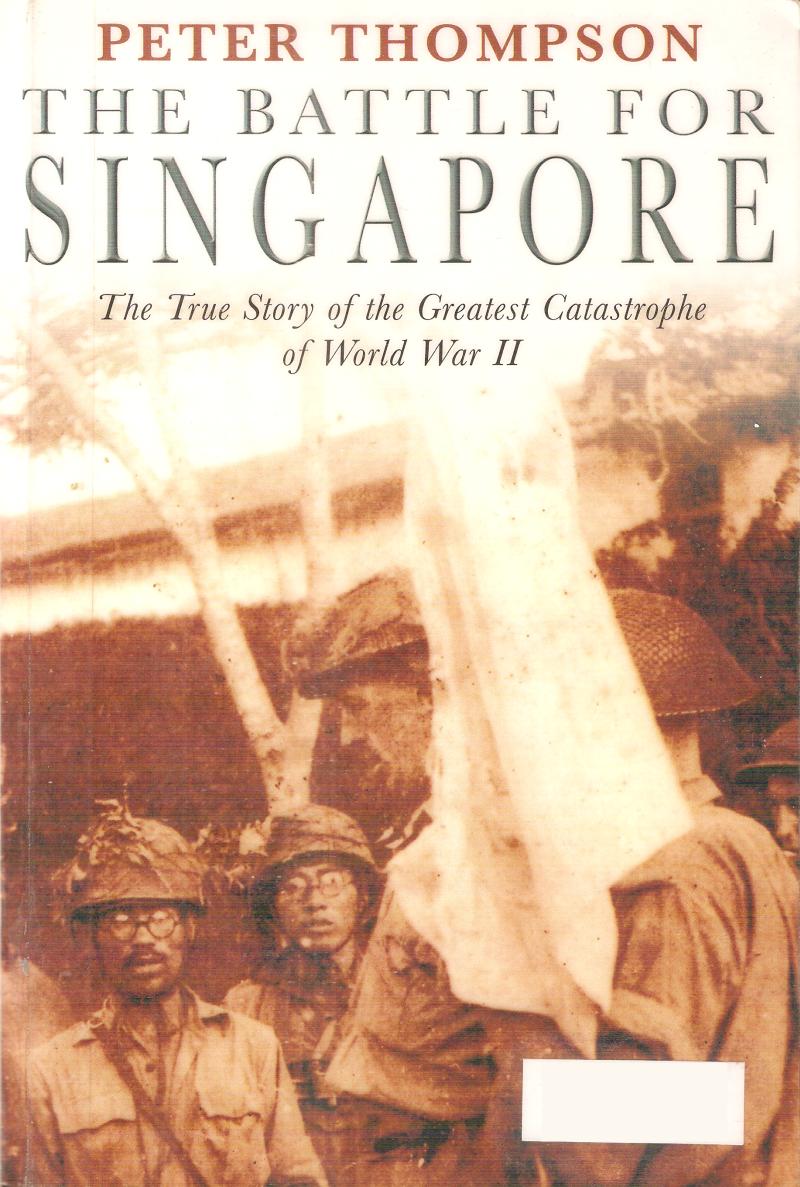The Battle for Singapore: The True Story of the Greatest Catastrophe of World War II by Peter Thompson
Publisher: Piatkus Books | Date: June, 2005 | ISBN: 0749950854 | Pages: 470 | siPDF in RAR | 110 mb
Publisher: Piatkus Books | Date: June, 2005 | ISBN: 0749950854 | Pages: 470 | siPDF in RAR | 110 mb
Review
"An enthralling and perceptive account, which never loses sight of the human cost of the tragedy" - Yorkshire Evening Post "An insightful and dramatic analysis" - The Good Book Guide" –This text refers to an alternate Paperback edition.
Product Description
The Fall of Singapore on February 15, 1942 was a military disaster of enduring fascination and seemingly unshakable myth. The book uncovers the controversial truths which have remained hidden behind self- serving lies and distortions for 60 years.
––––––––––––––––––––––-
14 of 14 people found the following review helpful:
5.0 out of 5 stars Disaster Daily……, March 2, 2007
By Rankbajin (Scotland) - See all my reviews
This review is from: The Battle for Singapore: The True Story of the Greatest Catastrophe of World War II (Paperback)
To truly understand a nation you need to understand how it reacts in defeat as well as victory. This is an excellent study of the former by Peter Thomson. Details of the adversaries on all sides of the conflict help to crystalise the thoughts and pervading attitude and atmosphere that both led to and propagated the greatest catastrophe and capitulation in British military history. The author's description of events, of the fighting retreat, tactics (especially of the Argyll & Sutherland Highlanders, Australian regiments and the Anti-tank and Artillery regiments) ,of the mistakes , mis-handling, bungling and lack of foresight, as well as some of the all too short successes is exilarating reading. The many atrocities covered make the ordinary mortal question the inhumanity of the Japanese Army. More balance might have been achieved by expressing more of the enemy military strategy and better maps would have help in the understanding, but this is nevertheless an outstanding historical read. I chose to read the book in parallel with Colin Smiths book Singapore Burning which developed my understanding . The culpability for the debacle was easily discernible through the narrative and politicians in Britain, Australia and Singapore play their part in this. The desertion, at the end , by the Australian commander General Bennett, all bull and bluster, was only counterbalanced by the extreme bravery of Australian and many other nationalities. It's also fair to say that others deserted Singapore by dereliction and were not brought to book. I strongly recommend this book to anybody interested in WW2 history and the fall of an Empire.
Help other customers find the most helpful reviews
–––––––––––––––––––––––-
9 of 9 people found the following review helpful:
5.0 out of 5 stars Defenses Are Bad For Morale, October 7, 2007
By Robert Derenthal "bucherwurm" (California United States) - See all my reviews
This review is from: The Battle for Singapore: The True Story of the Greatest Catastrophe of World War II (Paperback)
The Japanese have landed in Malaya and have started their 400 mile trek south to Singapore. When various officers suggested building defense works on the north side of Singapore Island General Percival vetoed the idea saying that defense works would be bad for morale. Later when the Japanese army initiated its crossing of the narrow straits separating Singapore Island for the Malayan peninsula it was determined that General Yamashita was coordinating the attack from the top of a five story tower attached to the Palace of the Maharajah of Johore. When asked permission to fire on the tower in order to destroy this unique observation post permission was denied. The reason? If the Maharajah's palace was damaged the British government would have to reimburse the Maharajah for the damage after the war.
This book provides a detailed account of that desperate attempt to keep the Japanese from reaching Singapore. Lacking air and naval cover, and led by general officers of questionable ability the British, Indian, and Australian troops fought valiantly, but ultimately lost. It is interesting that Churchill insisted that the army fight to the last man. That directive resulted in about 10,000 casualties for the Allied Forces.
Then follows the account of the brutal occupation of Singapore. Another interesting point is that Korean soldiers in the Japanese army were even more brutal than the Japanese soldiers. While it is inspiring to read of the many heroes who fought hard and endured deprivation and torture at the hand of their conqueror, it is also sad that these men were so poorly led by their generals.
The author has written this historical drama in a fine narrative style. My interest in books like these may differ from the interests of others. I am interested in the psychological and social impact of war, how soldiers and civilians cope with the stresses of war. Why do people make the decisions that they do, and why are some people heroic while others lose their humanity. This book provides this sort of information in some detail. At times I became a bit weary of the detailed account of each battle and skirmish, but then again that is what some readers are looking for. All in all a well rounded account of a great disaster of World War II.
Fully Bookmarked and Searchable, scanned by me :-)
[110 mb]
http://www.fileserve.com/file/CkrvKeP
or
http://www.megaupload.com/?d=Y1PSQ08X



